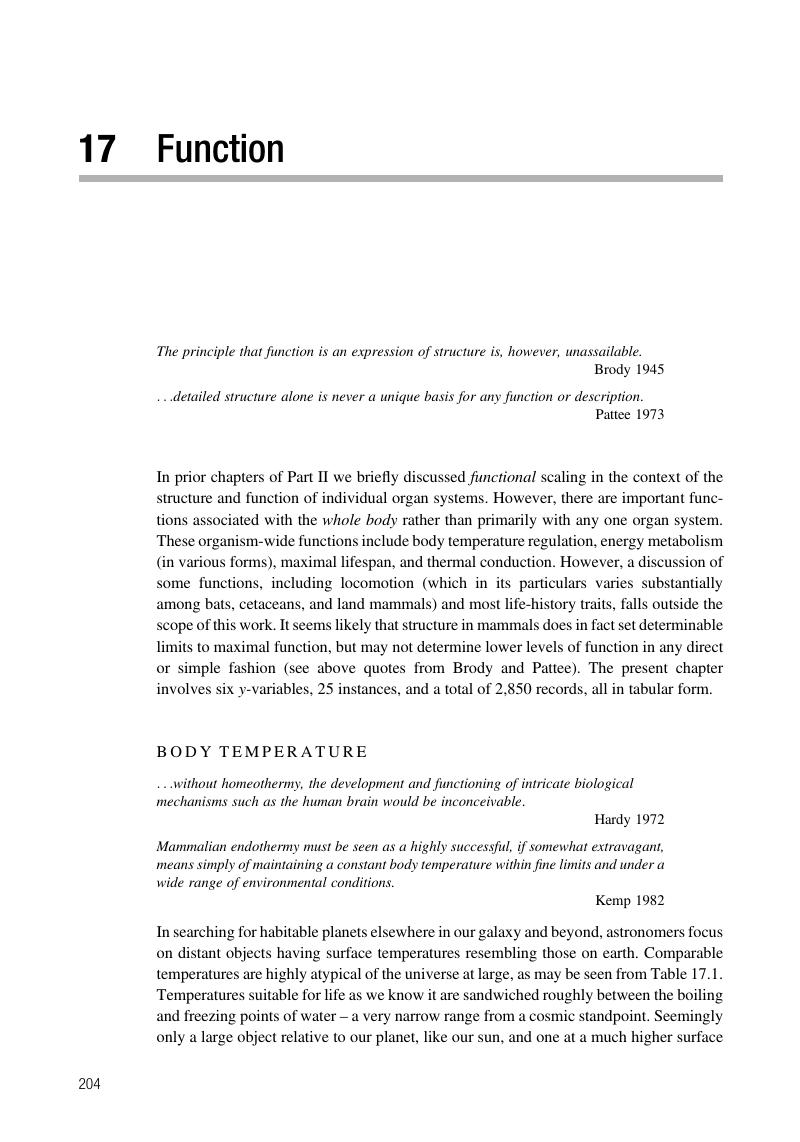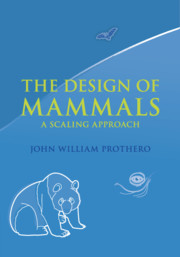Book contents
- The Design of MammalsA Scaling Approach
- The Design of Mammals
- Copyright page
- Dedication
- Dedication
- Contents
- Book part
- Part I Background
- Part II Empirical analyses
- 6 Body length, girth, and surface area
- 7 Body size distribution in adult mammals
- 8 Body composition
- 9 Circulatory system
- 10 Digestive system
- 11 Integumentary system
- 12 Musculoskeletal system
- 13 Neuroendocrine system
- 14 Reproductive system
- 15 Respiratory system
- 16 Urinary system
- 17 Function
- 18 Lethal limits
- Part III Survey of results
- Part IV Methodology
- Part V A broader view
- Book part
- Book part
- Book part
- References for quotations
- Index
- References
17 - Function
from Part II - Empirical analyses
Published online by Cambridge University Press: 05 November 2015
- The Design of MammalsA Scaling Approach
- The Design of Mammals
- Copyright page
- Dedication
- Dedication
- Contents
- Book part
- Part I Background
- Part II Empirical analyses
- 6 Body length, girth, and surface area
- 7 Body size distribution in adult mammals
- 8 Body composition
- 9 Circulatory system
- 10 Digestive system
- 11 Integumentary system
- 12 Musculoskeletal system
- 13 Neuroendocrine system
- 14 Reproductive system
- 15 Respiratory system
- 16 Urinary system
- 17 Function
- 18 Lethal limits
- Part III Survey of results
- Part IV Methodology
- Part V A broader view
- Book part
- Book part
- Book part
- References for quotations
- Index
- References
Summary

- Type
- Chapter
- Information
- The Design of MammalsA Scaling Approach, pp. 204 - 230Publisher: Cambridge University PressPrint publication year: 2015



